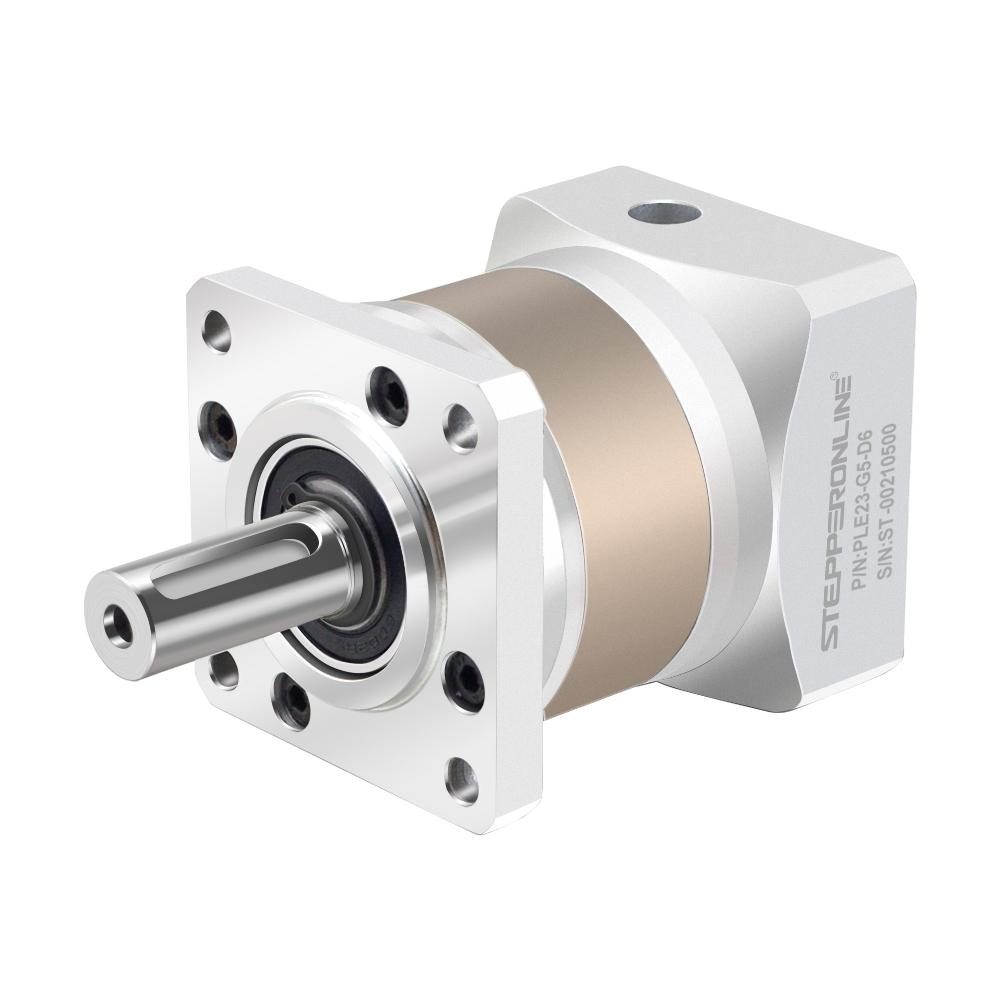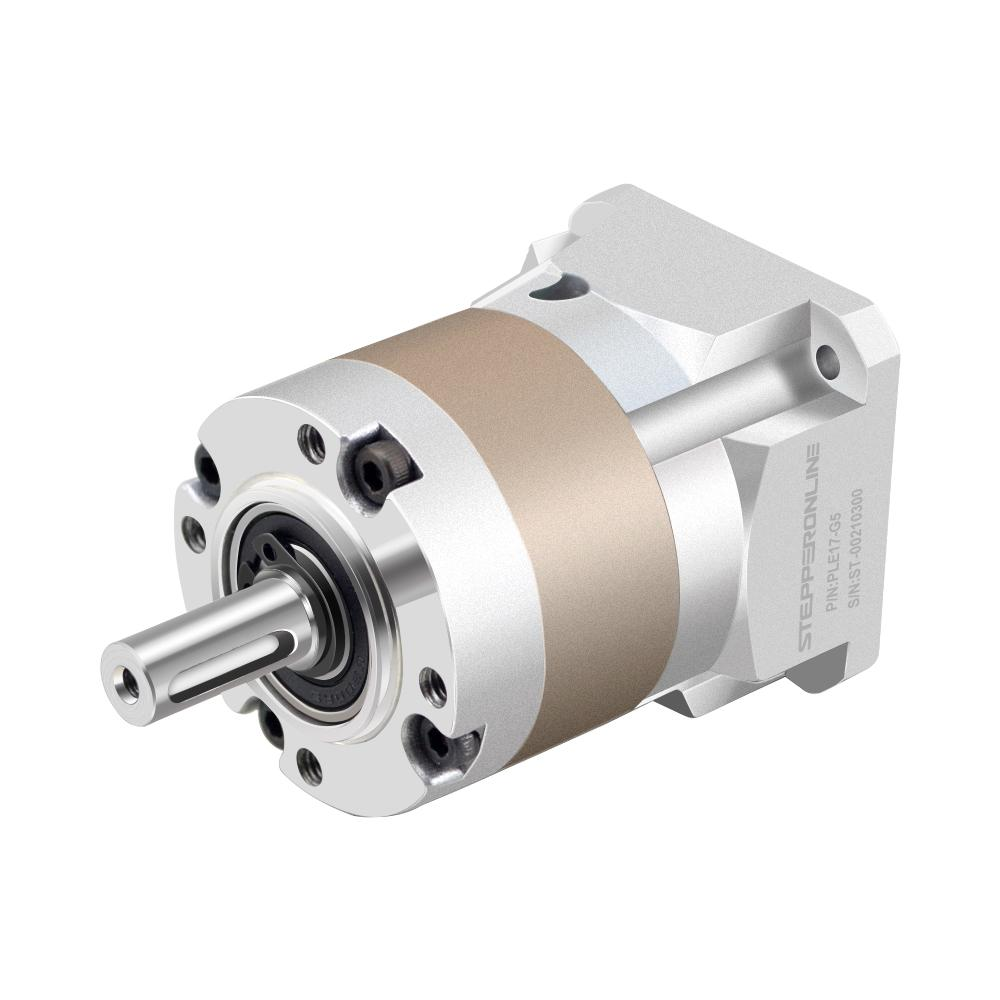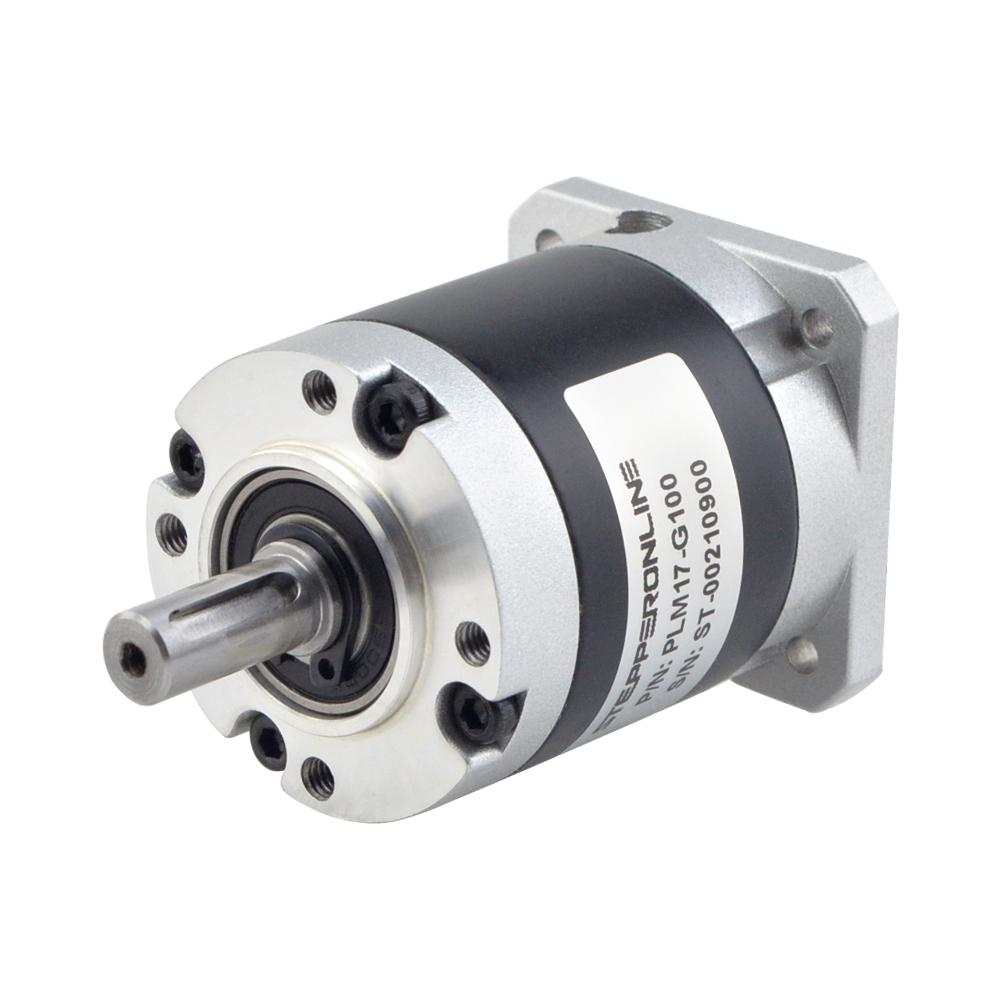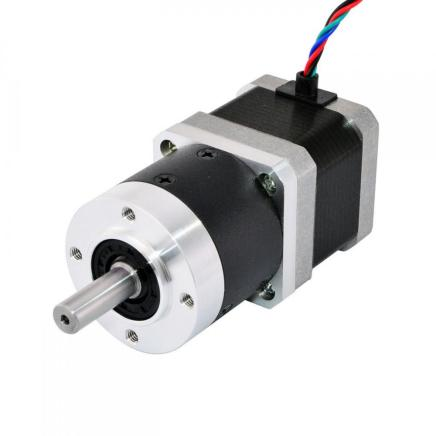A Designer Wishes to Use a Stepper Motor
Why use a planetary gearbox on a stepper motor?
Although stepper motors have been characterized by their accurate positioning capability and high torque output at low speeds, they need carefully sized to ensure that the stepper motor is compatible with the load and application parameters so that the possibility of lost steps or stepper motor stalling is minimized. Adding a planetary gearbox to a stepper motor system can yield yield the following benefits.

1.Reduce load to stepper motor inertia ratio
Inertia is one of the causes of missed steps in stepper motor applications. If the load inertia is noticeably higher than the stepper motor inertia, the stepper motor will have a difficult time controlling the load and may overshoot (more steps forward than commanded) or undershoot (missing steps).
A high load to stepper motor inertia ratio can also contribute to excessive stepper motor current and stall. It is the ratio of load inertia to stepper motor inertia that determines the ability of the stepper motor to drive or control the load. In order for the stepper motor control system to effectively control the load during acceleration and deceleration, the inertia of the stepper motor and load should be as close to equal as possible.

JL = inertia of load
JM= inertia of motor
If the inertia ratio is too high, there are two ways to reduce it: increase the ratio (output distance per motor revolution) or use a larger motor. Adding a gearbox to the system reduces the load-to-motor inertia ratio by the square of the gear ratio. While using a larger motor with higher inertia requires more space and cost. Planetary gearboxes are the preferred solution.

i = gear reduction
2.Increase torque to the load
With small mounting sizes, stepper motors are often used in systems where installation conditions are limited. The small size of the stepper motor results in a small torque. Adding a planetary gearbox increases the torque available to drive the load, while keeping the mounting flange unchanged. In the case where the load is driven by a motor-gearbox combination, an amount proportional to the gear ratio and planetary gearbox efficiency is multiplied by the torque from the motor by the planetary gearbox.

To = torque output at gearbox shaft
Tm = torque output at motor shaft
η = gearbox efficiency
However, increasing torque and decreasing speed in a planetary gearbox are simultaneous. That is why they are sometimes called "planetary gear reducers" or "planetary speed reducers". In other words, when a planetary gearbox is connected to a stepper motor, the stepper motor must rotate faster, delivering the target speed to the load by a factor equal to the gear ratio.

No = speed output at gearbox shaft
Nm = speed output at motor shaft
3.Reduce resonance and vibration of stepper motors
At low speeds, stepper motors suffer from strong vibrations and noise, which we call the "resonance zone" of stepper motors. The "resonance zone" generally occurs at low speeds in the motor speed range (40-100 rpm). With the planetary gearbox installed, the stepper motor input speed becomes faster and the planetary gearbox output speed slower, allowing stepper motor to run outside its resonance frequency range, thus successfully avoiding the resonance zone and allowing the stepper motor to run more smoothly.
4.Achieve ultra-low speed operation of stepper motors
Quite often stepper motors are not capable of operating at ultra-low speeds, let's say 1 rpm. But adding a planetary gearbox allows stepper motors to run at ultra-low speeds. In the case of some ultra-low speed range that the stepper motor can reach, although the resonance zone has been avoided, the phenomenon of stepper motor crawling will occur, and the operation is not smooth. With the addition of a planetary gearbox, ultra-low speed operation is possible by increasing the speed of the stepper motor.

5.Protect stepper motors from damage
Planetary gearboxes allow for a certain degree of protection of the stepper motor. The gearbox receives high torque during operation. When an overload is transmitted to the stepper motor, the amount of overload is divided by the value of the gear ratio.
In the case of very large overloads, the stepper motor may be damaged if the overload is taken up directly by the stepper motor. After adding the planetary gearbox, the reducer is damaged first. The planetary gearbox only needs to replace the spare parts to be able to restore the use, the cost is relatively low. If the stepper motor is damaged directly, the repair is relatively slow and costly.

6.Energy saving
In the event of continuous load and low speed operation, the current of the machinery and equipment must be increased in order to ensure that it has sufficient output torque. This situation tends to cause the equipment to heat up, affecting heat dissipation and insulation, and increasing energy consumption. The use of planetary gearboxes allows stepper motors to meet the output torque with much less current, thus effectively saving energy.
7.More cost-effective
The torque increased by the planetary gearbox is also equivalent to an increase in input power, which reduces the input power required by the motor (in applications where speed regulation is required), and generally the motor is more expensive than the planetary gearbox, so it is more cost effective to use planetary gearboxes as an alternative option.

Summary
Adding a planetary gearbox to a stepper motor has these benefits, such as reducing the inertia ratio of the load to the stepper motor, increasing the torque to the load, reducing the vibration of the stepper motor, achieving ultra-low speed operation, protecting the stepper motor from damage, saving energy and being more cost effective.
A Designer Wishes to Use a Stepper Motor
Source: https://www.omc-stepperonline.com/why-use-a-planetary-gearbox-on-a-stepper-motor
0 Response to "A Designer Wishes to Use a Stepper Motor"
Post a Comment